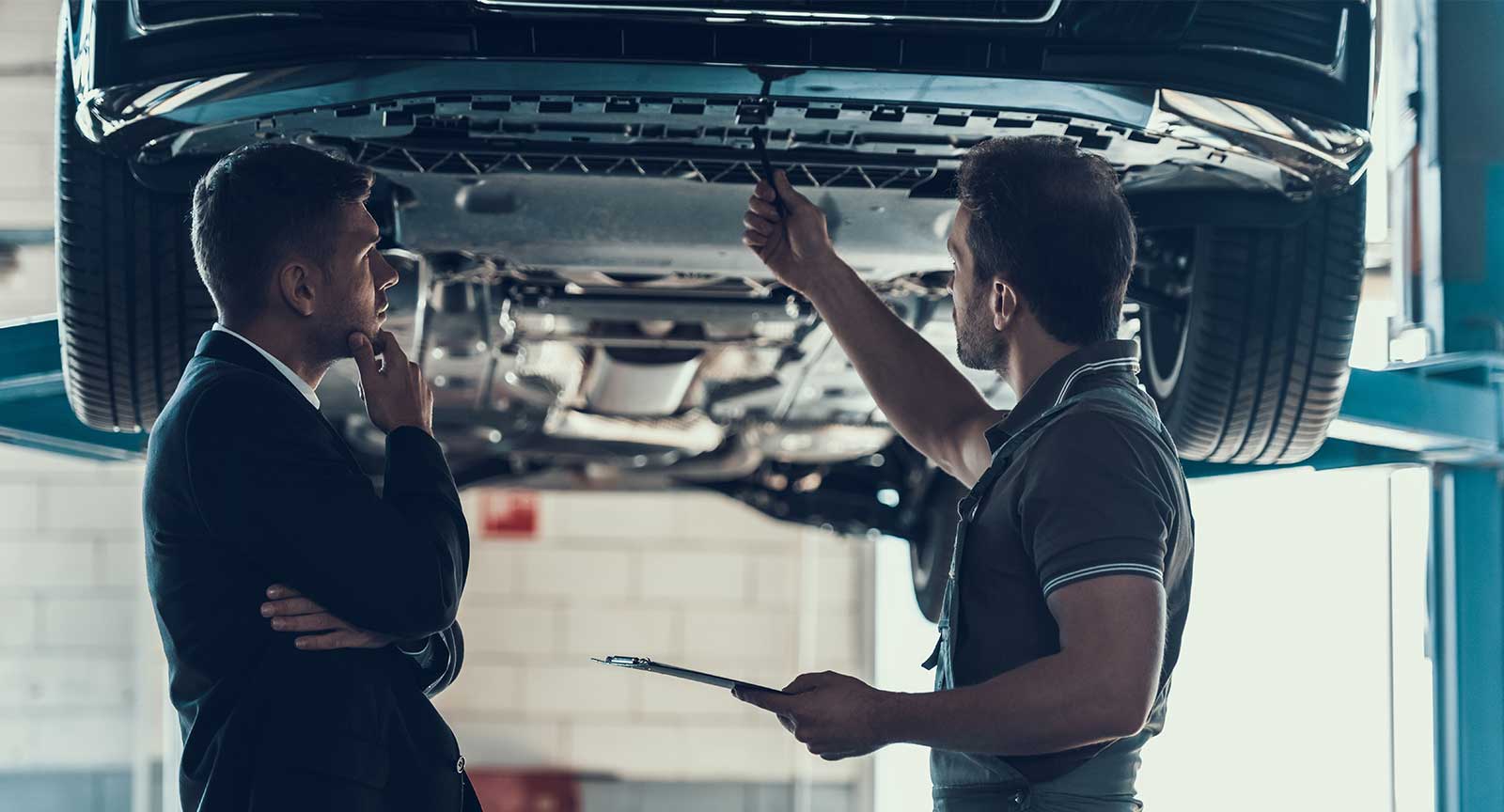A new course
Cars, lorries, metros, drones... land and air transport is increasingly turning to automation. It is a trend where science meets science-fiction, whether that’s on land, in the air, or even at sea. From fishing boats to sailing ships, oil tankers to freight, river and sea transport... they have all opted for a change of course, encouraged by a growing number of promising experiments. And although large scale adoption may not yet be on the radar, one question is already being asked: Where is the balance between technological advances, environmental impact, cost management, and security standards? It’s a single question, but a number of factors need to be placed in the perspective of our times to understand the maritime loss adjustment of the future.
The green wave
Global warming is a reality, and cause for the most legitimate concern. On 20 August, an international study was published in Nature. Its peer reviewed predictions were alarming. The analysis of three decades of satellite data reach the following unshakable conclusion: Greenland’s ice sheet is set to vanish, although this vanishing could put an end to global warming. This means that the relevance of the energy transition can no longer be called into question. Accounting for 90% of all transported goods, 4% of CO2 emissions and 10% of sulphur emissions around the world, the shipping industry has a role to play. Since the early 2010s, a number of initiatives have been launched, with Europe at the helm.
Between 2012 and 2015, for example, the European Commission subsidised the Maritime Unmanned Navigation through Intelligence in Networks (MUNIN) research project. But these automated vessels encounter a major obstacle: international regulations that ban uncrewed sailing. Why? To answer this question, we first need to define exactly what is classed as an automated vessel.
Whatever the size of vessel, from a simple boat to a military flagship, the International Maritime Organisation (IMO) has identified four levels of automation:
- Level 1: Ship with automated processes and decision support: seafarers are on board to operate and control shipboard systems and functions. Some operations may be automated.
- Level 2: Remotely controlled ship with seafarers on board: the ship is controlled and operated from another location, but seafarers are on board.
- Level 3: Remotely controlled ship without seafarers on board.
- Level 4: Fully autonomous ship: the operating system of the ship is able to make decisions and determine actions by itself.
In this context, what are the benefits and promises that are motivating many countries to invest more heavily in autonomous shipping? They fall under three umbrellas: environmental, economic, and safety.
The space saved by reducing or removing the crew and their facilities means that ship bottoms (as the submerged parts of the hull are known) can be made more hydrodynamic. A different kind of hull, with a lower centre of gravity to manage cross-currents but also, and primarily, to increase the ship’s payload and transport capacity. More goods transported, bigger margins, cleaner engines (electric or LNG)… the ships of the future seem to combine ecology and economy. That just leaves safety. While most experiments have been conducted under favourable weather conditions, a great many uncertainties remain about safety in heavy seas.
And in the past just as today, accidents prove these concerns are warranted. A few examples:
The bigger the boat…
To understand the total loss experience of the future with hybrid electric and hydrogen engines, we need to look at the situation today. Maritime incidents are at their lowest levels since the turn of the century, with a significant reduction of 50% in 2018. From 98 total incidents (which implies a shipwreck) in 2017, the figure dropped to 46 the following year.[1] This was due to reduced activity in South-East Asia in particular, the region most affected by hurricanes and typhoons. In light of this observation, it’s best to do away with the idea that cinema has led us to believe: while shipwrecks are indeed full of environmental and human drama, the complete sinking of a mega-ship is a rare occurrence.
And so another question arises: what is the most common type of incident?
It is varied, and very much of its time and extremely particular situation. While the shipping industry has broadly demonstrated its resilience in recent months, the coronavirus crisis has not spared its crews, exhausted by being forced to work longer without a change of shift. This physical and mental fatigue only builds over a period of weeks, bringing with it an increase in incidents owed to human error. More and more mistakes, fewer and fewer maintenance equipment and provisions (gear oil, lubricants, etc.) thanks to the difficulty resupplying in a world on hold, in lockdown, or under restrictions. The statistics from before the crisis already made things clear: in 75% to 96% of declared shipping accidents, human error was the cause. Quite literally, to err is human.
However, human error can come in different forms, beyond simply blaming the crew. One example can be found off the coast of Nigeria, where acts of piracy have elevated this “African Giant” to the top spot on this sorrowful ranking.
From an insurance point of view, breakage of machinery remains the leading cause of incidents, accounting for more than one third of the 26,000 incidents recorded in the past decade. It exceeds collisions, the second most frequent cause of accidents. Fires occupy third place as a cause of on-board damage, and continue to grow in number with a varied range of causes, from electrical problems to issues with cargo. Examples include incorrect declaration, labelling, and even packaging of hazardous materials, without the necessary precautions being taken. There are many kinds of incident that can occur, and the measures to combat them are limited by the shipping environment. All that can be hoped for is an external saviour.
Burnt out, sunk, or quarantined, goods remain the main reason for maritime insurance claims. Then there’s cargo, which involves inspection of the container, as well as the ship that is carrying it. It accounted for one third of ships lost last year, and more than half of the 1036 ships that have sunk over the last decade. It is against this vast horizon of possibilities that maritime loss adjusters must navigate, between lost goods and damage to the ship, with all risks coverage being the most common policy taken out by professionals in the industry.
On land and sea
It would be convenient to think that all maritime incidents have high stakes, but everyday maritime loss adjustment is not always marked by collective damages and other shipwrecks. Without going into too much detail about the industry, we should note that these incidents occur on both land and sea, with ships both aground and at sea. On land, loss adjusters work on insurance for the shell, inspecting the hull and the machinery on board to identify the causes of the incident and the viability of any solution, as well as to assess the value of any damage. It is urgent work for a logical reason: an immobile ship is a ship that costs money to most of those involved, from the owner to the shipwright, the sender to the charterer. With the boat held up in the docks, maritime loss adjusters seek solutions to liberate the goods, examine damage, and ensure delivery if their condition allows. In this environment, every situation is unique.
Unique because it concerns the role and particularities of each individual ship. Engine troubles or offshore rescues aren’t processed in the same way as issues with a trawler’s fishing equipment. And yet! Whatever a ship is used for, they are all comparable to a production line. One malfunction and the entire line shuts down. This means that in addition to assessing damage and potential reparations, another priority appears that is unique to the role of the loss adjuster: limiting business interruption. This is a slippery consequence that requires a solution tailored to the sector in which the incident occurred.
A cross-channel ferry aground in Dunkirk with tourists on board will not be processed in the same way as a damaged sailing boat. One demands rapid processing of the tourists to get them to the right port, and limiting operating losses while loss adjustment takes place. The other requires an inspection of the cause of the damages to propose appropriate repairs, or sourcing a buyer for the boat if no financially viable solution can be found and it is to be scrapped.
But for both, maritime loss adjusters draw on their technical expertise and insurance knowledge to offer appropriate compensation, in line with the insurance policies in play. With autonomous shipping powered by new forms of energy taking to the seas, maritime loss adjustment needs to adapt. But despite the promise of these new technologies, and automation in general, the insurance industry is not lagging behind. It can draw on a wide range of interdependent skills to manage claims in project mode, honed through years of experience. This is true for cyber risks where any on-board technology can be maliciously subverted, and requires meticulous analysis to determine the risks involved and protect against them, whether in a car or on a ship.
Autonomous shipping is far from a mirage on the horizon. Everywhere, new projects are seeing the light of day. This is true in France where the first shipping certificate was issued to an autonomous ship. Elsewhere, in Northern Europe, autonomous ferries developed by Rolls-Royce are being tested in the Finland’s Turku archipelago. In neighbouring Norway, the fjords of Oslo and Trondheim are serving as a test lab for electric autonomous cargo ships, able to transport over 100 containers. These are just two examples of the same technology that may usher in a green transition in the maritime transport sector. Good omens that will nevertheless fail to put an end to maritime incidents for one simple reason: As long as there are humans, there will be accidents!
Didier GIRAUD
Loss Adjuster – In charge of maritime specialty
Stelliant Corporate Loss Adjusting
[1] Safety and Shipping Review 2020: An Annual review of trends and developments in shipping losses and safety; Allianz Global Corporate & Specialty








